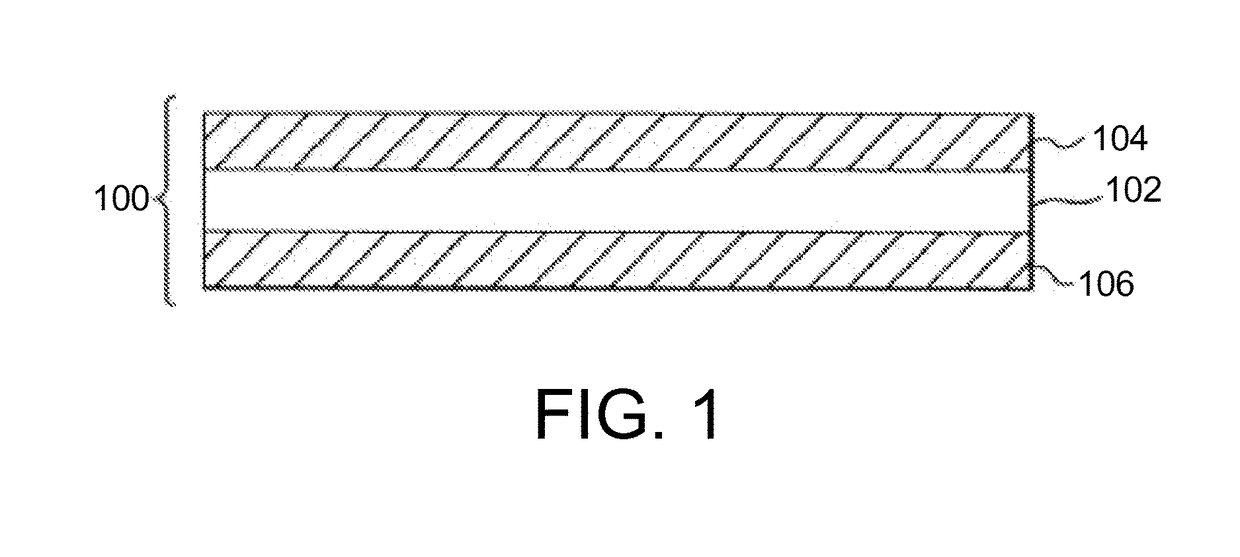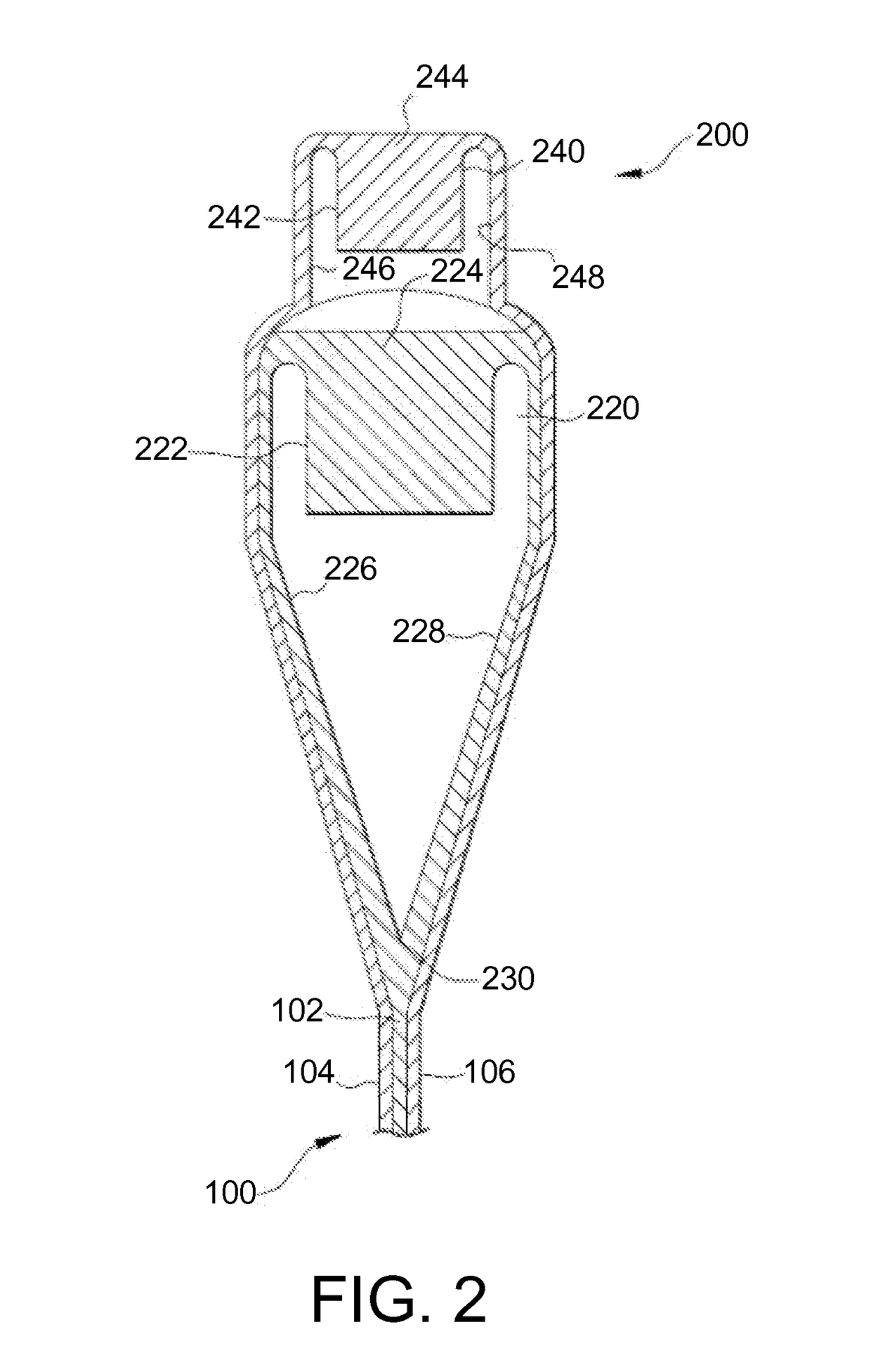Glass article with determined stress profile and method of producing the same
a stress profile and glass article technology, applied in the field of glass articles, can solve the problems of m being relative large flaws can be introduced into the surface of glass articles during use,
- Summary
- Abstract
- Description
- Claims
- Application Information
AI Technical Summary
Benefits of technology
Problems solved by technology
Method used
Image
Examples
Embodiment Construction
[0016]Reference will now be made in detail to exemplary embodiments which are illustrated in the accompanying drawings. Whenever possible, the same reference numerals will be used throughout the drawings to refer to the same or like parts. The components in the drawings are not necessarily to scale, emphasis instead being placed upon illustrating the principles of the exemplary embodiments.
[0017]As used herein, the term “average coefficient of thermal expansion,” or “average CTE,” refers to the average coefficient of linear thermal expansion of a given material or layer between 0° C. and 300° C. As used herein, the term “coefficient of thermal expansion,” or “CTE,” refers to the average coefficient of thermal expansion unless otherwise indicated.
[0018]Chemically strengthened glass is used as a cover glass for a variety of consumer electronics devices (e.g., smartphones, tablet computers, personal computers, ultrabooks, televisions, and cameras). Breakage of such cover glass can be c...
PUM
| Property | Measurement | Unit |
|---|---|---|
| compressive stress | aaaaa | aaaaa |
| compressive stress | aaaaa | aaaaa |
| thickness | aaaaa | aaaaa |
Abstract
Description
Claims
Application Information
 Login to View More
Login to View More - R&D
- Intellectual Property
- Life Sciences
- Materials
- Tech Scout
- Unparalleled Data Quality
- Higher Quality Content
- 60% Fewer Hallucinations
Browse by: Latest US Patents, China's latest patents, Technical Efficacy Thesaurus, Application Domain, Technology Topic, Popular Technical Reports.
© 2025 PatSnap. All rights reserved.Legal|Privacy policy|Modern Slavery Act Transparency Statement|Sitemap|About US| Contact US: help@patsnap.com



